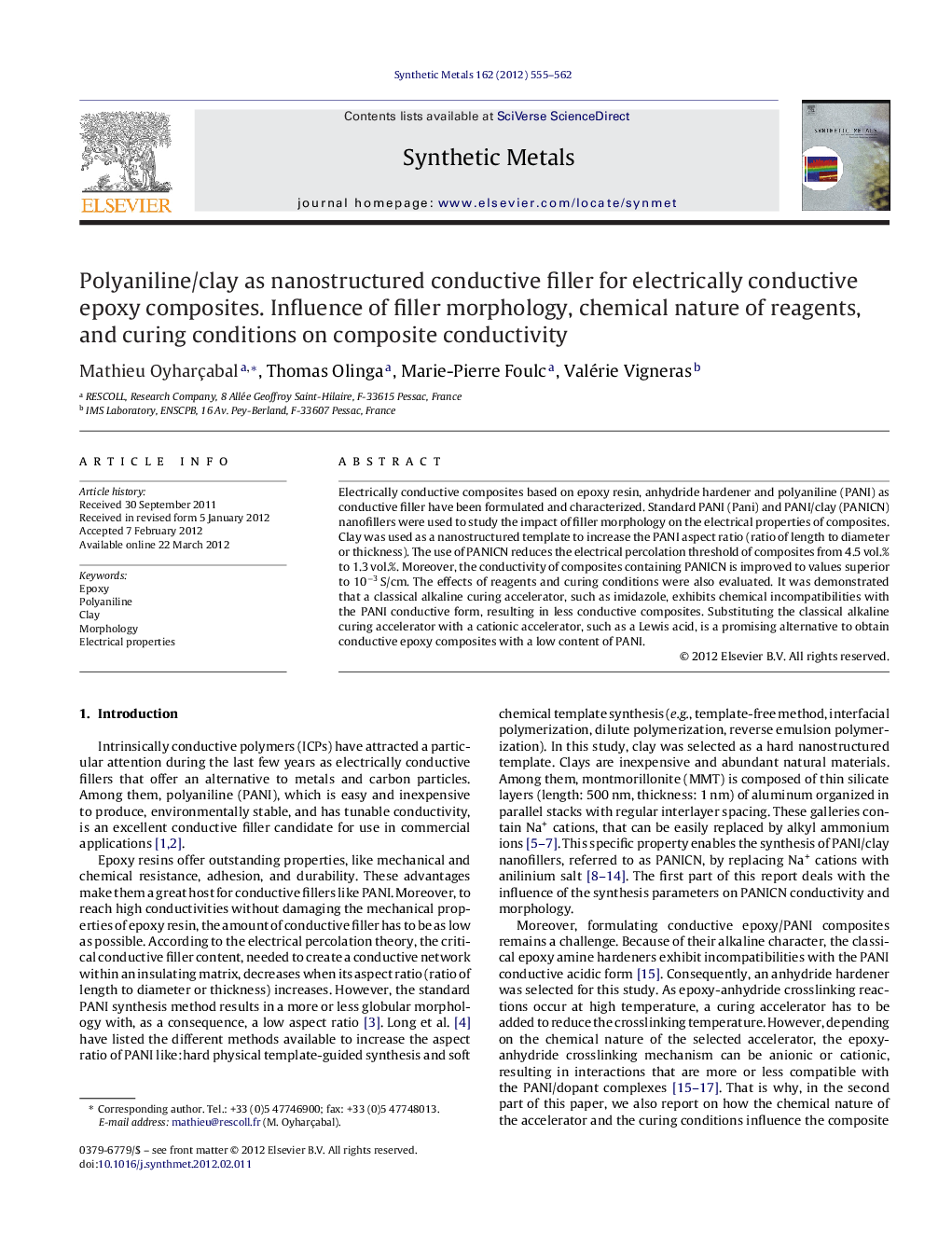| کد مقاله | کد نشریه | سال انتشار | مقاله انگلیسی | نسخه تمام متن |
|---|---|---|---|---|
| 1441908 | 1509421 | 2012 | 8 صفحه PDF | دانلود رایگان |

Electrically conductive composites based on epoxy resin, anhydride hardener and polyaniline (PANI) as conductive filler have been formulated and characterized. Standard PANI (Pani) and PANI/clay (PANICN) nanofillers were used to study the impact of filler morphology on the electrical properties of composites. Clay was used as a nanostructured template to increase the PANI aspect ratio (ratio of length to diameter or thickness). The use of PANICN reduces the electrical percolation threshold of composites from 4.5 vol.% to 1.3 vol.%. Moreover, the conductivity of composites containing PANICN is improved to values superior to 10−3 S/cm. The effects of reagents and curing conditions were also evaluated. It was demonstrated that a classical alkaline curing accelerator, such as imidazole, exhibits chemical incompatibilities with the PANI conductive form, resulting in less conductive composites. Substituting the classical alkaline curing accelerator with a cationic accelerator, such as a Lewis acid, is a promising alternative to obtain conductive epoxy composites with a low content of PANI.
Figure optionsDownload as PowerPoint slideHighlights
► Polyaniline/clay as electrically conductive nanofillers successfully dispersed in epoxy resins.
► Influence of filler morphology on composites conductivity demonstrated.
► Polyaniline with higher aspect ratio reduces the electrical percolation threshold of composites.
► Conductivity improved with polyaniline/clay fillers compared to a standard polyaniline.
► Impact of epoxy formulation and curing conditions on composites conductivity underlined.
Journal: Synthetic Metals - Volume 162, Issues 7–8, May 2012, Pages 555–562